Black in this City
March 5 - 7, 2024
This series aims to bring together professionals, academics, historians, students, community members & leaders to better understand Black resilience across Canada and across disciplines.
View flyer here
Canada has a rich history of inspiring Black individuals who shattered barriers and broke through the black ceiling. Join us as we learn more about some of these remarkable figures in Canadian history this Black History Month. Check back daily to discover today's changemaker!
Compiled by the Faculty's Anti-Black Racism Committee. Illustrations by Ginette Crichlow.
In honor of Black History Month, we pay tribute to the remarkable achievements and contributions of Black Canadian athletes who have excelled in their respective sports.
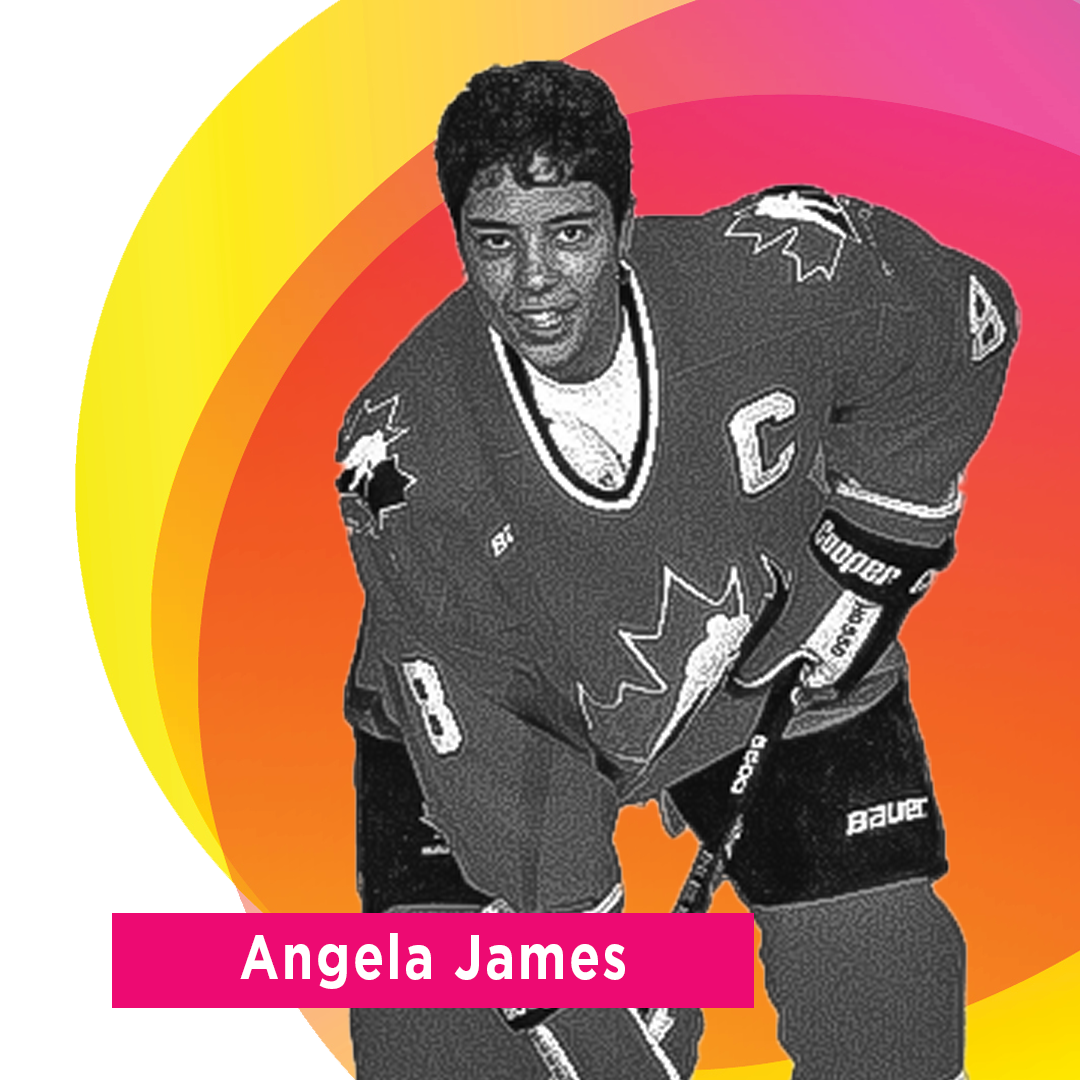
Illustration: Ginette Crichlow
Angela James is a pioneering and dominant figure in Women's hockey in Canada. Angela made history in 2010 becoming the second Black athlete to be inducted into the Hockey Hall of Fame.
Born in Toronto, her journey began when she joined a boys hockey league since there were no girls' teams nearby. Her mother fought for her right to play. Angela's passion for hockey continued as she joined a girls' hockey program in Don Mills and led her team to numerous championships.
Her talent led her to play for the Canadian women's hockey team, where she became instrumental in leading the team to several world championships. In 1990, she made history again, leading Canada's National Team to the gold medal at the inaugural International Ice Hockey Federation's World Women's Championship in Ottawa.
Angela James, Black Ceiling and Barrier Breaker.
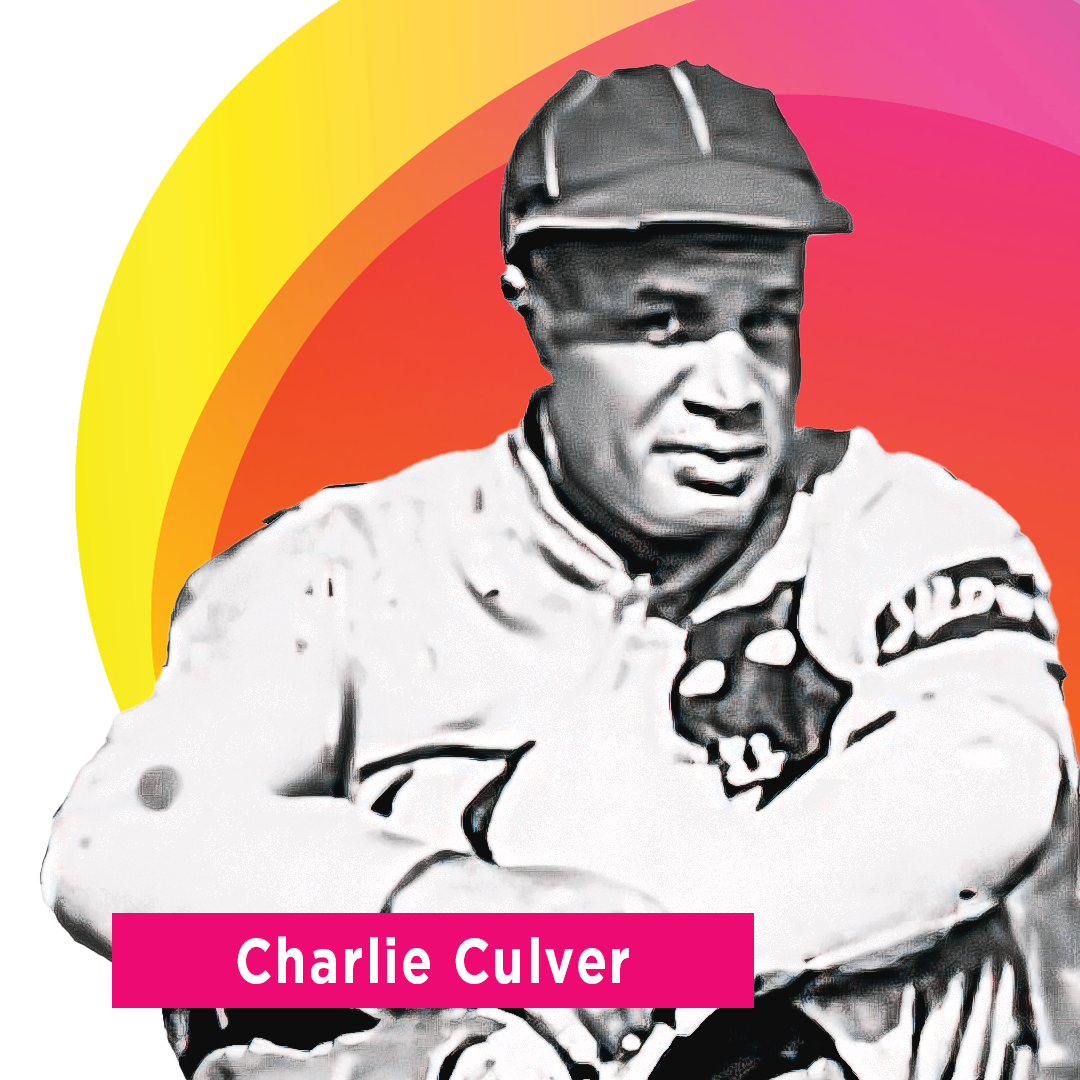
Illustration: Ginette Crichlow
Charlie Culver was more than just a baseball player; he was a coach and manager too, making a significant impact in the sport. Charlie was born in the U.S. and moved to Canada in 1919 with his team - the Havana Red Sox, an all-Black team.
Charlie met a woman and fell in love, choosing to stay in Canada, settling in Montreal. He began playing for a local baseball team, Saint-Henri, which went on to compete for the city championship.
In 1922, Charlie signed on to play for the Montreal Royals, defying the rules prohibiting Black players from major league baseball at the time. Despite his amazing skills and contributions, he faced adversity, and was removed from Royals after just six games.
Undeterred, Culver went on to play for several semi-professional all-Black teams, making an impact for several seasons. Then, in 1936, he became the manager of the Montreal Black Panthers, a Black team competing in the Quebec Provincial League. He was a highly regarded coach, who continued to contribute to the sport well into his 50s.
Charlie Culver; Black Ceiling and Barrier Breaker.

Illustration: Ginette Crichlow
Jarome Iginla was born in Edmonton in 1977, and grew up in St. Albert, raised by his mother and grandparents."
Jarome started playing hockey at age 7, bu also had a deep love for baseball, and he played both sports with equal passion. From 1993 - 96, he played three seasons for the Kamloops Blazers of the Western Hockey League (WHL) and was named player of the year for the 1995-96 season.
In the 1995 NHL Entry Draft, he was drafted 11th overall by the Dallas Stars before being traded to the Calgary Flames. By the 2003–04 NHL season, Iginla was the Flames' team captain, recognizing his leadership on and off the ice.
By his final season with the Flames, 2012-13, Iginla held most of the team's important franchise records, including most goals, points, and consecutive games.
In his amazing career, Jarome also won 2 Olympic gold medals with Team Canada, and left an indelible mark on international hockey.
After a remarkable career, Jarome Iginla retired from professional hockey in 2018, leaving a legacy as a true hockey hero.
Jarome Iginla; Black Ceiling and Barrier Breaker.
In celebration of Black History Month, we honour the remarkable contributions of a few Black artists and talents who have enriched our cultural landscape.

illustration: Ginette Crichlow
Ginella made history in 2015 as Canada's first hijab-wearing television news reporter, breaking barriers in Kitchener, Ontario, for CTV news.Her talent led her to work for local and national news outlets, in both television and radio, both on air and behind the scenes.
Ginella's dedication and excellence earned her the prestigious Canadian Screen Award for broadcast journalism and media personality. Gina announced her departure from Canada Tonight this past July, and says she is contemplating “other ways I can meaningfully contribute to this fast-changing media landscape.”
Join us in celebrating Ginella Massa, a trailblazing journalist who continues to make history!
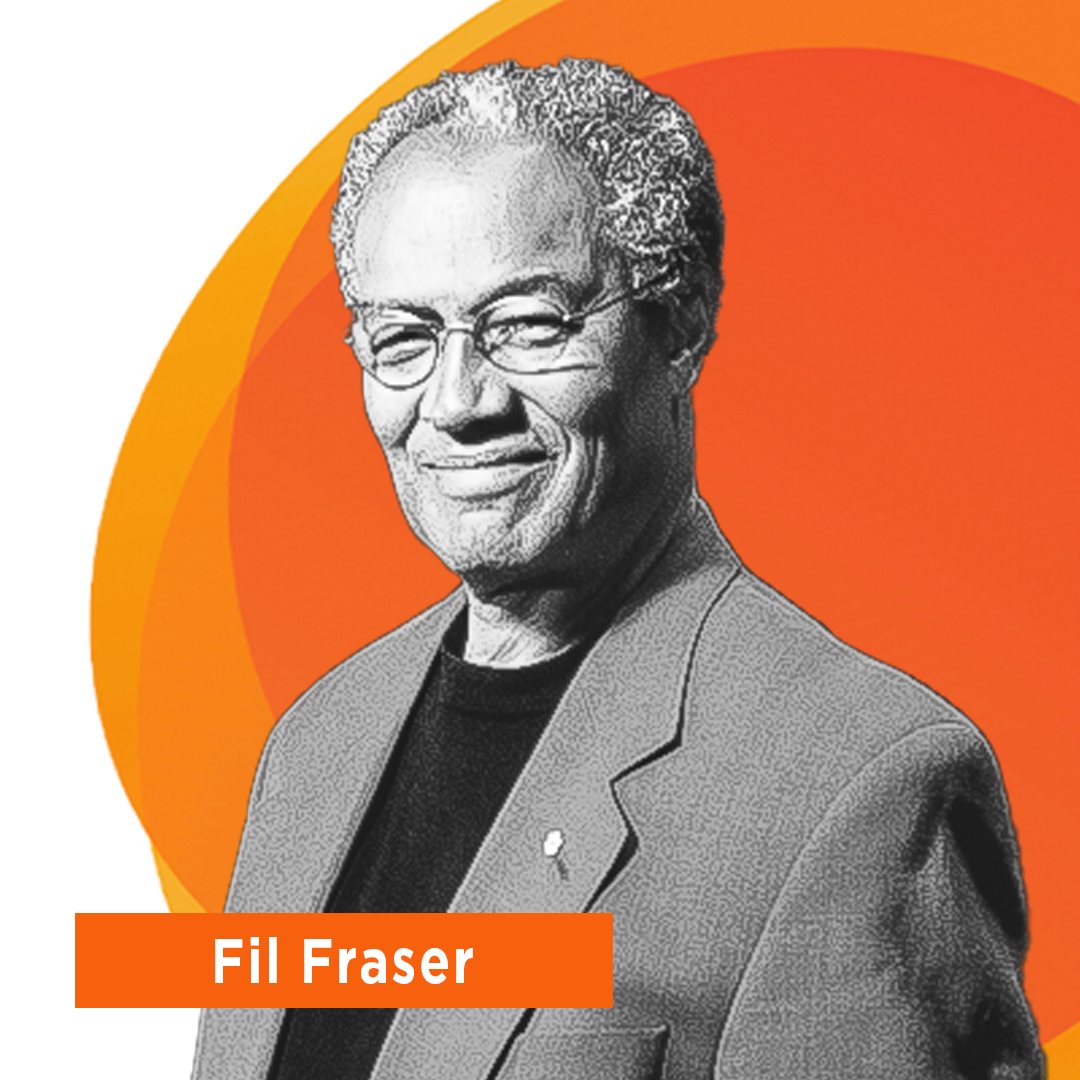
Illustration: Ginette Crichlow
Born in Montreal in 1932, Fil Fraser became the first Black broadcaster in Canada, blazing a trail for future generations. He dedicated his life to educating people, leaving a profound impact as a broadcaster, journalist, TV director, film, radio, and TV producer.
His journey in broadcasting started at the age of 19 in Toronto, where he worked mostly as a sports announcer. By 1960, Fraser had founded and published the Regina Weekly Mirror, covering important events like the introduction of Medicare by Tommy Douglas. He also wrote the biography of sprinter Harry Jerome, Running Uphill: The Fast, Short Life of Canadian Champion Harry Jerome, which was later turned into a documentary.
Fil Fraser received numerous honours and awards, including being named a Member of the Order of Canada for his contributions to broadcasting.
Join us in celebrating Fil Fraser, a trailblazing educator, advocate for human rights, and a pioneer in Canadian broadcasting.

Illustration: Ginette Crichlow
Born in Toronto in 1977, Jully Black is one of Canada's most acclaimed R&B/Soul singers and songwriters.
Her journey began at the age of 6, singing in church and being inspired by the legendary Whitney Houston. Her family encouraged and supported her musical ambitions, driving her to pursue a career at age 12, fuelled by the lack of representation for women of colour in Canadian media.
Jully's talent shone early, with her collaboration with Toronto rapper Choclair winning a Juno Award in 1997. Her first chart single, 'Rally'n,' released in 1998, catapulted her to even greater heights.
Jully has released seven studio albums, showcasing her versatility and artistry. Her contributions to music have been recognized, as she was named one of 'The 25 Greatest Canadian Singers Ever' by CBC music. In February 2023, Jully made a powerful change to the national anthem, reminding us of the importance of acknowledging 'our home ON native land.'
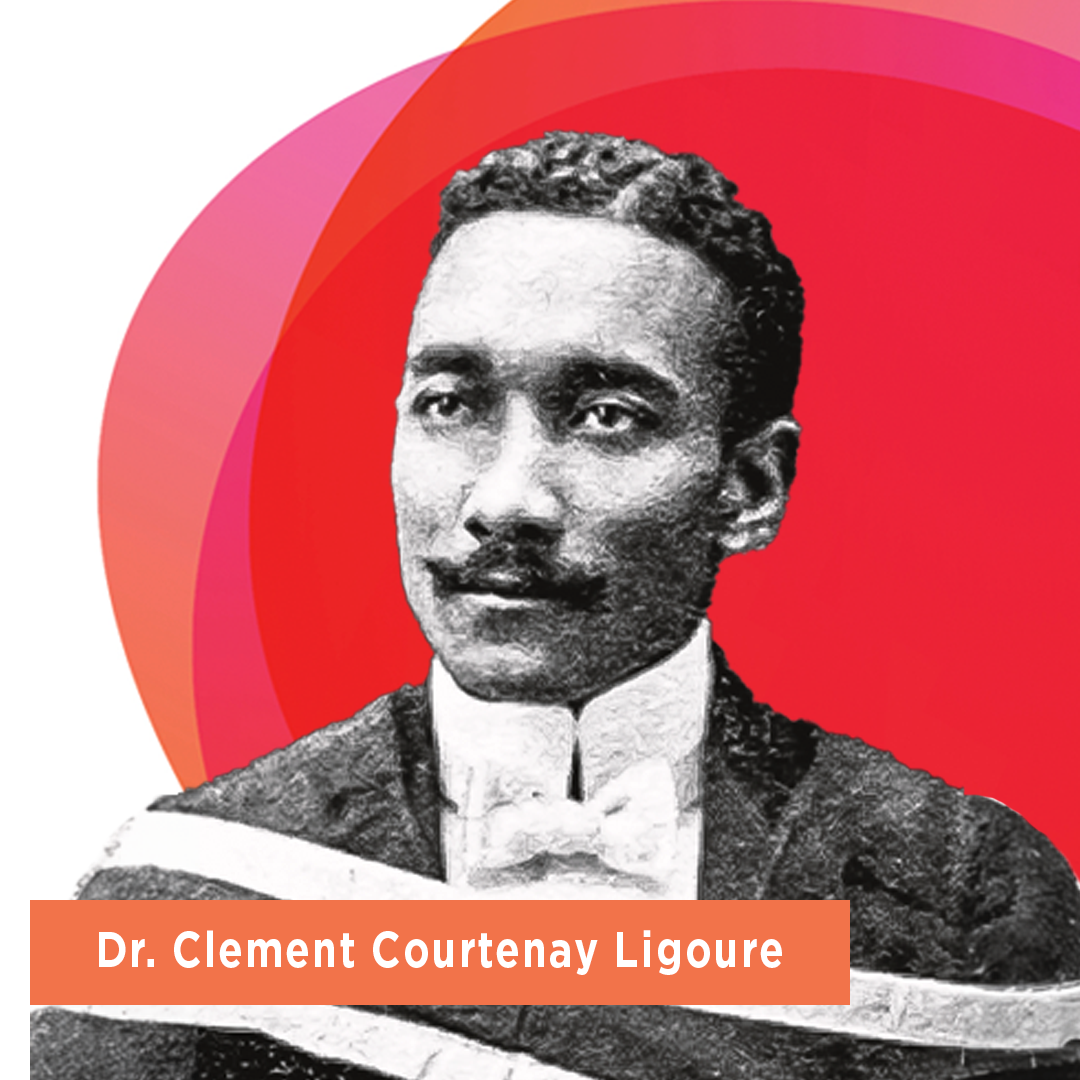
Illustration: Ginette Crichlow
Our second week of changemakers features the powerful contributions of Black activists and educators who have shaped our society.
We begin with Dr. Clement Courtenay Ligoure, who was born in Trinidad on October 13, 1887. After emigrating to Canada, he attended medical school at Queen's University in Kingston, Ontario, and graduated in 1916.He made history as the first Black doctor to practice medicine in Nova Scotia.
He tried to join the Canadian Forces during World War I, however racial discrimination denied him and other Black men that opportunity. Undeterred, Dr. Ligoure, along with other community leaders, pushed back and created the No.2 Construction Battalion, an all-Black unit. Liquoure went on to publish Halifax's first Black publication, the Atlantic Advocate.
Liquor would go on to open the Amanda Private Hospital which saved hundreds of lives after the Halifax Explosion. His contributions are recognized today with an award in his name for exemplary service during a medical crisis.
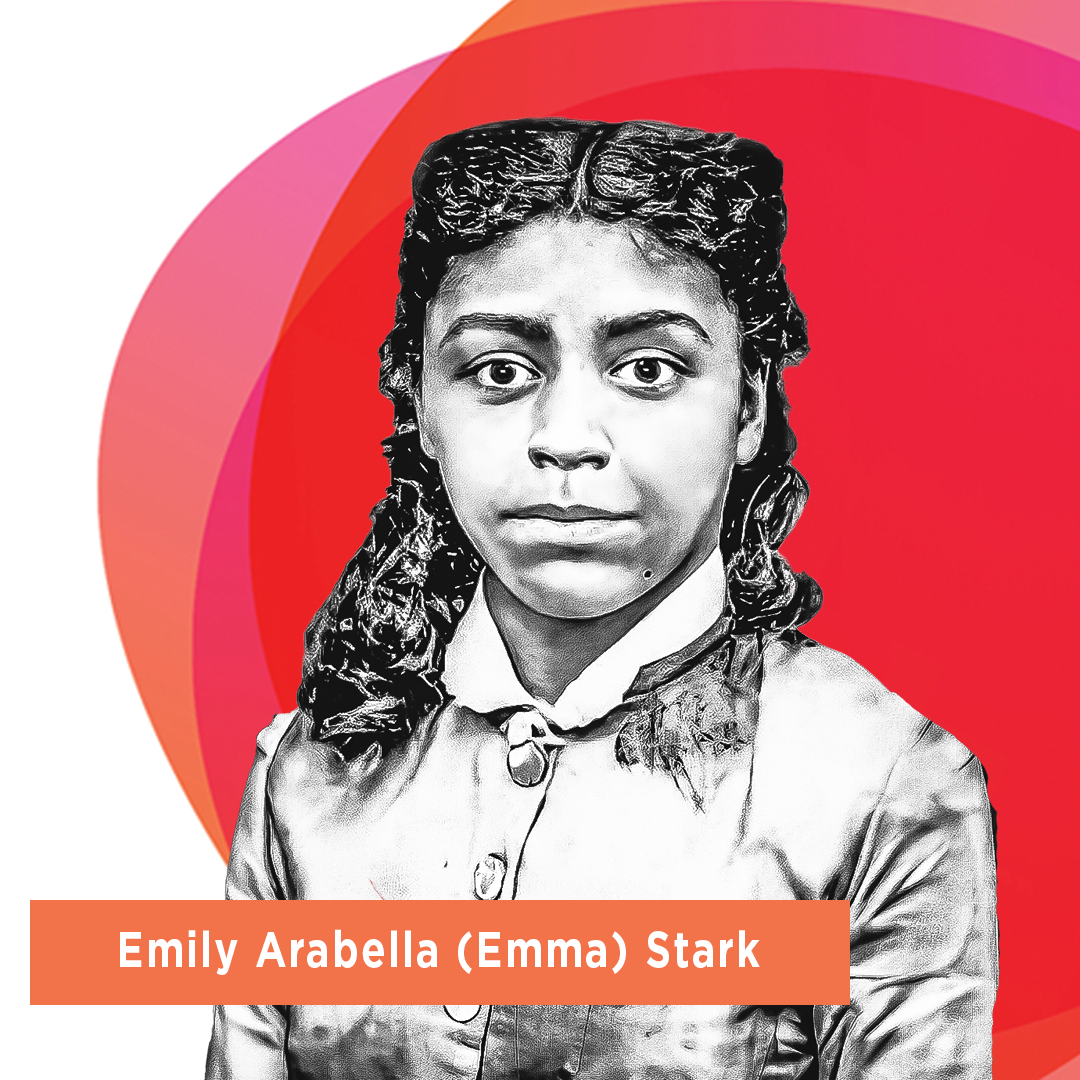
illustration: Ginette Crichlow
Born on Feb. 17, 1856, Emily moved to Cedar, BC with her family in 1875.
She attended primary school on Salt Spring Island and onto Nanaimo, BC to pursue training to become a teacher.
In August 1874, she made history as the first Black teacher on Vancouver Island, teaching at the Cranberry-Cedar School near Nanaimo. Her dedication to education went beyond the classroom. She opened her cabin to board students who lived too far away to commute to school daily. She devoted her short life to empowering the young people of BC. Join us in celebrating Emma Stark, a trailblazer in education and a true inspiration.
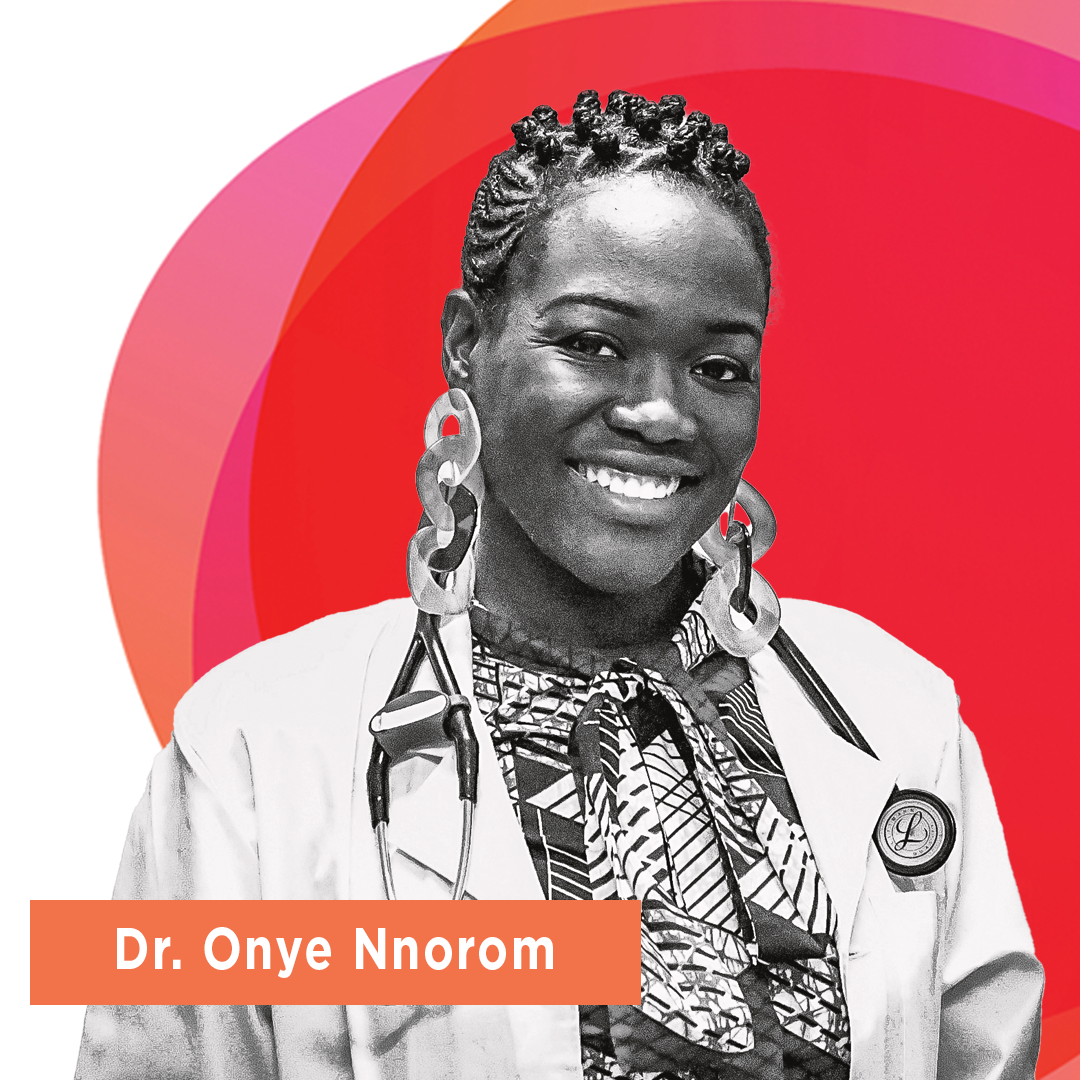
Illustration: Ginette Crichlow
Dr. Onye Nnorom was born Feb 27, 1981, in Montreal, Quebec, to immigrant parents from Nigeria and Trinidad, her journey was one of determination and purpose.
She was interested in science from a young age, she attended a summer camp for gifted students, setting the stage for her future endeavours. With a Bachelors degree from Concordia University, a medical degree from McGill University, and a Master's degree in public health from the University of Toronto, her academic journey soared.
Dr. Nnorom's work is dedicated to addressing the health inequities faced by racialized and immigrant communities. She led the University of Toronto's efforts to include awareness of anti-Black racism and its effects on access to care in the medical school curriculum. As President of the Black Physicians’ Association of Ontario and co-leader of the Black Health Education Collaborative, she continues to drive change.
Dr. Nnorom's impact extends to her podcast 'Race, Health & Happiness,' launched in 2020 to help racialized people stay well, thrive, and find joy. Join us in celebrating Dr. Onye Nnorom, a trailblazer who is making a difference in healthcare and beyond.
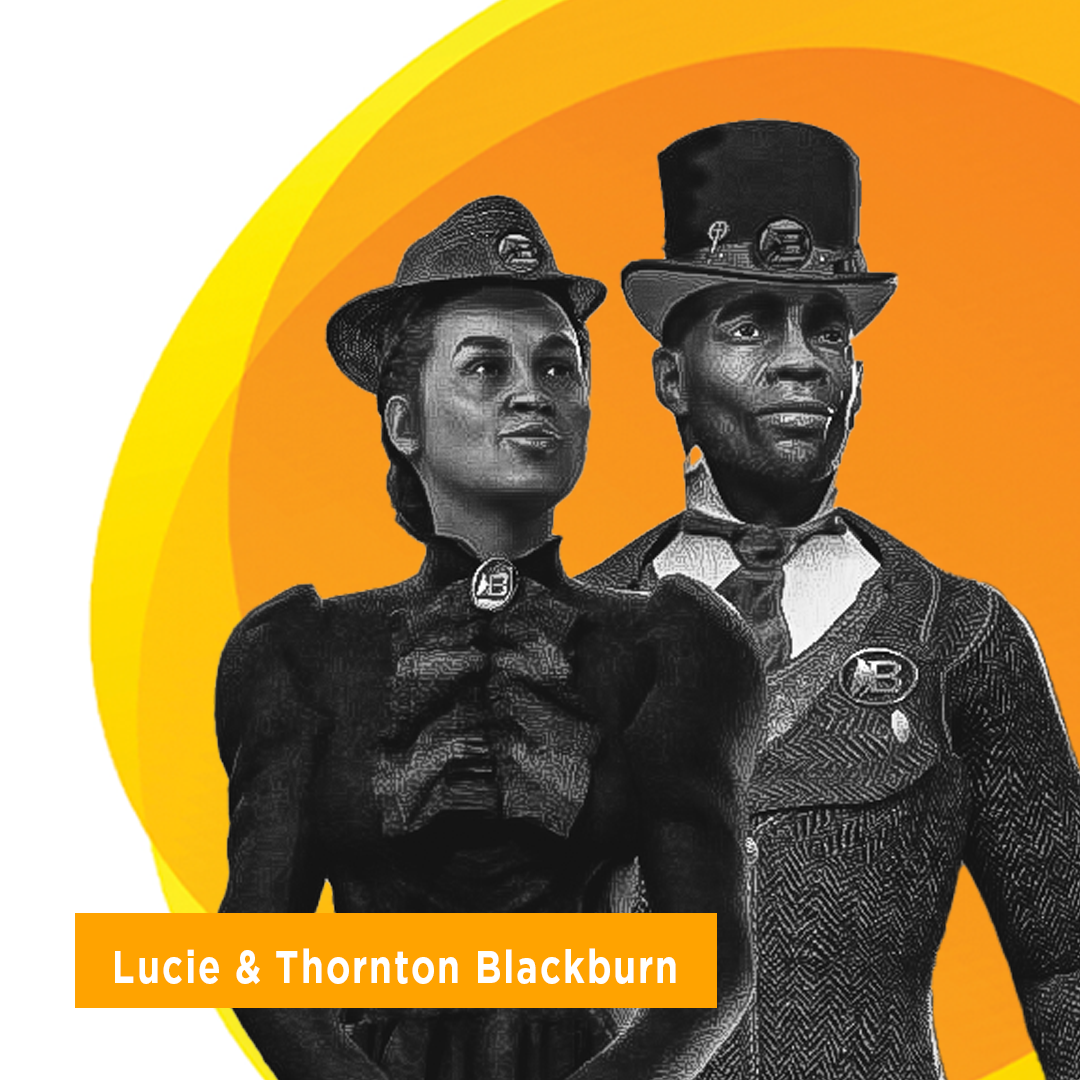
Illustration: Ginette Crichlow
Meet Lucie and Thornton Blackburn, courageous freedom seekers who narrowly escaped slavery in the United States and found refuge in Canada. In 1833, they arrived in Toronto, where their escape prompted the establishment of the first refugee reception policy in Upper Canada."
The Blackburns went on to establish Toronto's first cab company. Their bright yellow and red, horse-drawn cabs left a lasting influence, that can still be seen in the Toronto Transit Commission's logo.
The Blackburns were not only abolitionists, they were part of the Underground Railroad, providing shelter for many other freedom seekers from the United States. Their brave actions and dedication to the abolitionist movement have left a lasting legacy of freedom and resilience.
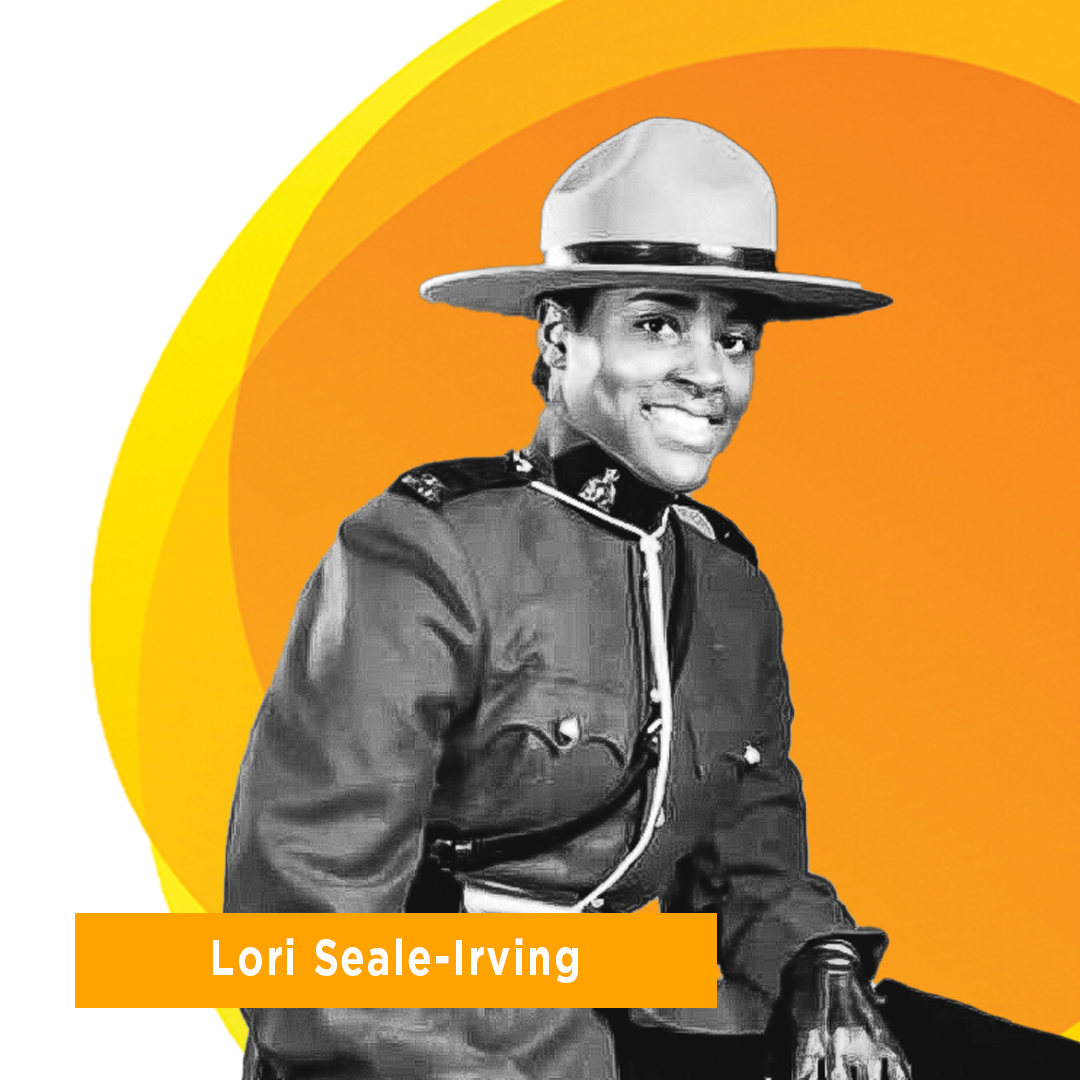
Illustration: Ginette Crichlow
Barrier Breaker Lori Seale-Irving is Canada's first Black Female RCMP Commissioned Officer. She was born and raised in Ottawa, where her father was a Royal Canadian Air Force Officer (retired Major). Fueled by her desire to support and serve the people in her community, she joined the RCMP in 1990.
Her wide ranging experience with the force has included general duty policing, marine security, war crimes and protection and management support for the Prime Minister's security.
In 2007 she was promoted to the rank of Inspector, a first in the 87 year history of the RCMP.
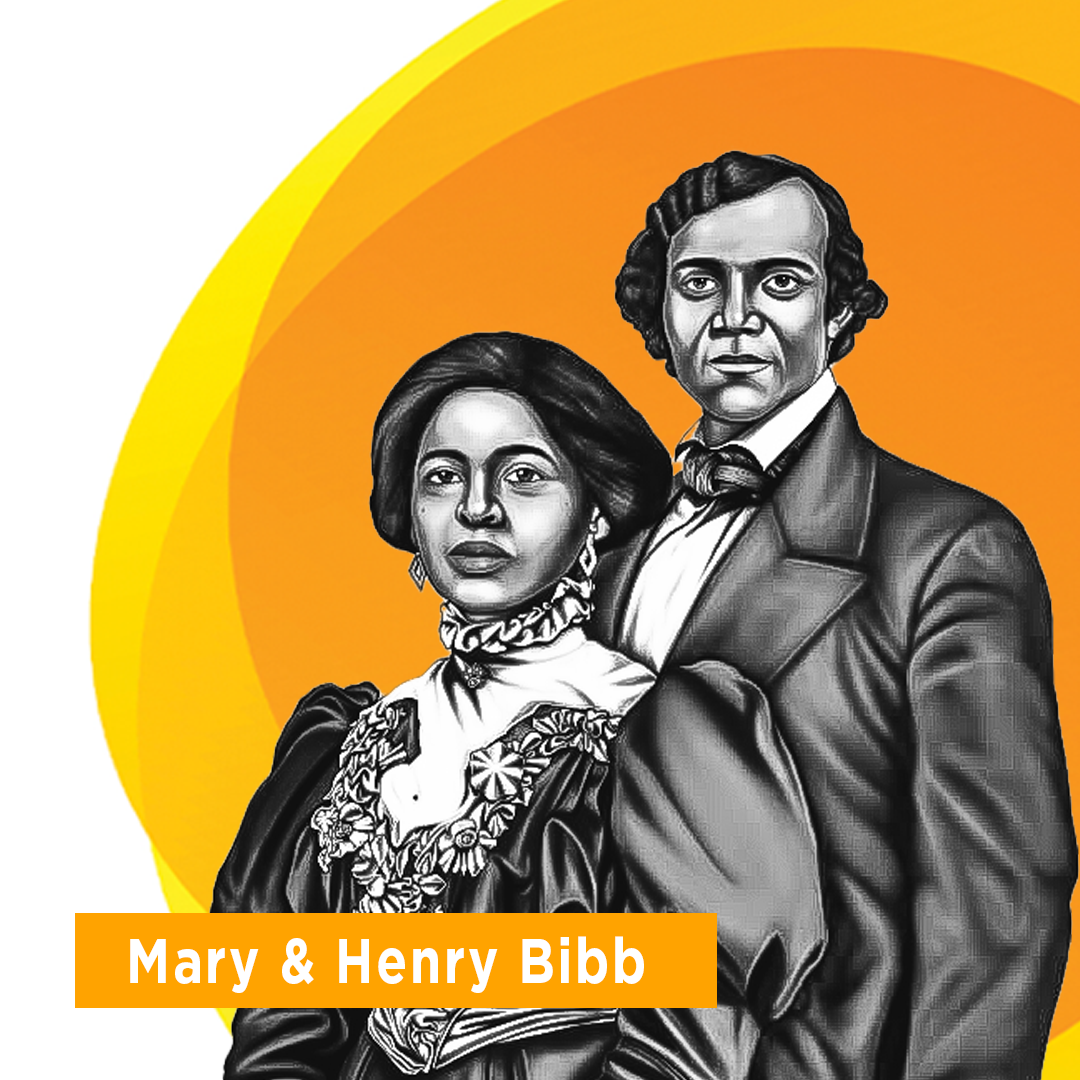
Illustration: Ginette Crichlow
Mary and Henry Bibb met and married in the United States in the 1800s and escaped slavery in Canada together, where they found freedom and supported the international abolition of slavery movement. They became prominent members of the Black community in Windsor, Ontario, where they ran a general store.
Their contribution to the abolition movement was extraordinary. They founded the Voice of the Fugitive, the first Black-owned newspaper in Canada. Passionate about education, they established their own schools, because discrimination against Black students was so prevalent in the public school system.
Henry Bibb also wrote and published his autobiography, Narrative of the Life and Adventures of Henry Bibb, an American Slave, in 1849. Their unwavering commitment to the abolition movement and their community leaves a powerful legacy of freedom and resilience. We also remember their invaluable contributions to the fight for equality and justice.
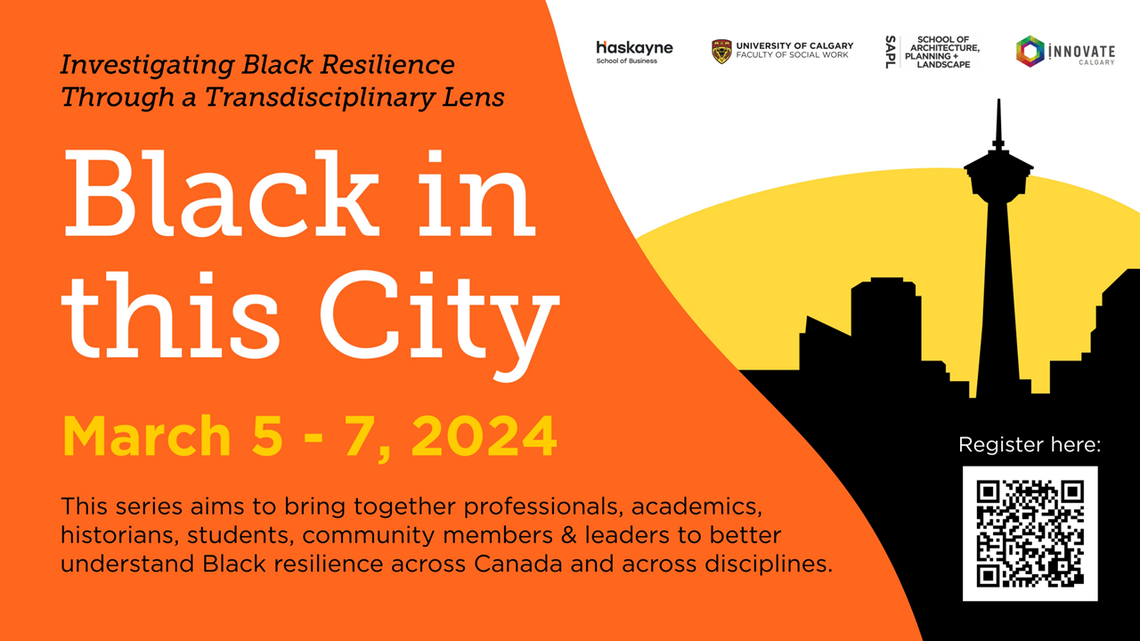
Scan the QR code to register and learn more about these events
This series aims to bring together professionals, academics, historians, students, community members & leaders to better understand Black resilience across Canada and across disciplines.
View flyer here
with Irvine Carvery & Liza Arnason
March 6: 9 a.m. - 12 p.m. Collision Space (4th Floor) Hunter Hub
Scan QR Code above to register for this event
March 6: 2 p.m. - 4 p.m. Collision Space (4th Floor) Hunter Hub
Scan QR Code above to register for this event
March 7: 5 p.m. - 7 p.m. City Building Design Lab